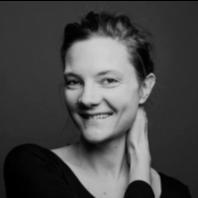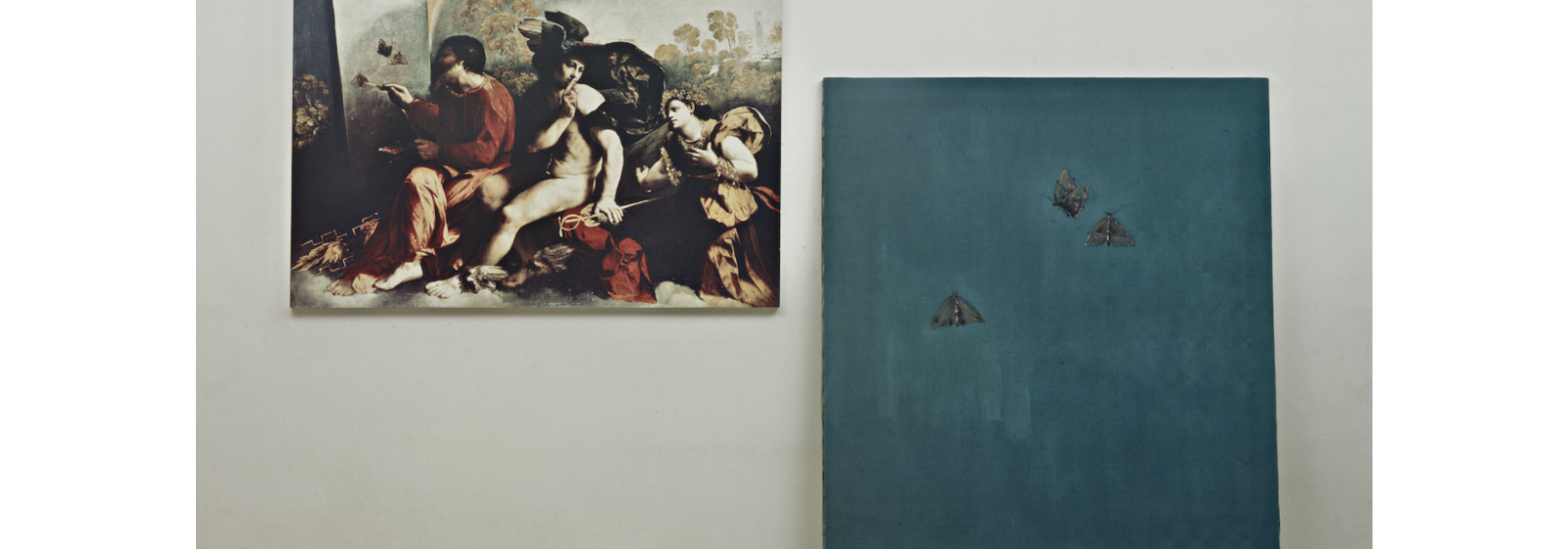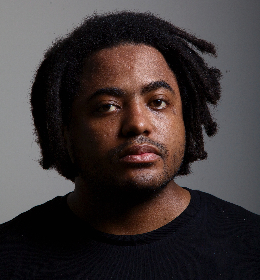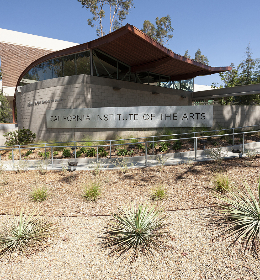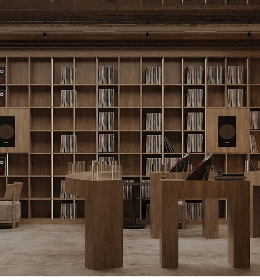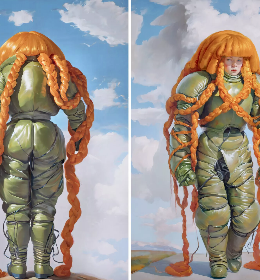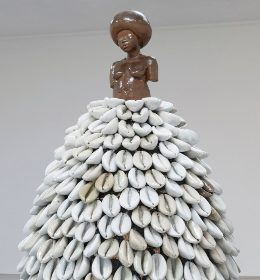He was a businessman and the founder of the fashion brand Max Mara; he started his contemporary art collection in the early 1950s with the buying of a Alberto Burri work. The collection consists of several hundreds of works of art that date from the end of WW2 up to this day with a special attention put on pieces by the Transavanguardia (Sandro Chia, Mimmo Paladino, Enzo Cucchi, Francesco Clemente…) from the Arte Povera (Jannis Kounellis, Giuseppe Penone, Alighiero Boetti…) and by German and American neo-expressionists (Jörg Immendorff,, Markus Lüpertz, Anselm Kiefer, Eric Fischl, Julian Schnabel, David Salle…). Around 200 works are permanently exhibited in the building that used to foster the previous headquarters of the brand. The visitor cannot miss the monumental and awesome Claudio Parmiggiani creation (Caspar David Friedrich, 1989), a long and thin boat transporting three large single coloured black canvases. By being suspended in the air, it gives off the impression that it floats and sails through the air. A highlighted quote by Walter Benjamin sets the tone for the collection, a tone of rigor, the quest of sensitive unity : "the great collector is originally struck by confusion, the fragmentation of all worldly things. The collector puts together what is similar; he may only control things according to their affinity and their succession over time".

TARWUK, Tužni Rudar (2018)
Resin clay, mild steel, polyurethane foam, wire, thread, coyote hide, acrylic, coffee, human teeth, dentures, BQE (Brooklyn-Queens Expressway) relics, salt, dried flowers, steel cable — 220 x 245 x 170 cm ( variable dimension) Ph. Dario Lasagni © TARWUK
As a somewhat normal life is coming back, and despite some remaining sanitary restrictions, the Collezione Maramotti is presenting two temporary exhibitions. The first "Ante mare et terras" is centered around TARWUK, an artistic duo formed in 2014, composed of two Croats living in New York : Bruno Pogačnik Tremow and Ivana Vukšić (both born in 1981). For their first personal exhibition in Italy, the duo unveils four mixed-media sculptures and several works on paper done in 2020 when they couldn't have access to their workshop. The name given to their exhibition "Ante mare et terras", is taken from the first book of Ovide's Metamorphosis that deals with the origins of the world : "Before the sea, before the earth and the sky that covers all, nature, throughout all the universe, would offer a single aspect; we called it chaos; it was only a shapeless and confused mass, nothing but an inert bloc of disorganised elements". Born in Croatia in what was at that time the Socialist Federal Republic of Yugoslavia, Bruno Pogačnik Tremow and Ivana Vukšić have grown up during Croatia's war of independence (1991-1995). Under the name of TARWUK, they present human sized sculptures that recall the disasters of war. Created with organic materials (coffee, coyote skin, dried up flowers, salt, human teeth, argile, rubber…) as well as industrial elements (polyurethane foam, steel cables…), these works convey a morbid, maybe even apocalyptic, universe. Molds of torsos made with resin associated with heads made of wax that were smashed by steel blades. The use of disparate material suggests the chaos that is evoked in the exhibit's title. At the beginning of each thing, the original upheaval reaches for organisation to allow life to flourish. In a demiurgic poetry, TARWUK proposes a vision of the world that is pessimistic yet where everything can emerge through mutation. The project strayed with the piece Tužni Rudar (The Sad Miner) (2018) that is a template for the other three sculptures. This totem work with a resin head on top that observes itself in the mirror reminds us of the First world War's "broken faces".

TARWUK, KLOSKLAS_črgNAWSS.143 (2019)
Resin clay, mild steel, polyurethane foam, recycled cowhide, glass, wire, wood, copper wire, copper pennies, thread, recycled coyote hide, acrylic, coffee, dried flowers, wooden branch - 190 x 80 x 50 cm (variable dimension) Ph. Dario Lasagni © TARWUK
All these sculptures are created according to the principle of assembling recycled elements that keep us in the worrying strangeness of an unknown and dangerous world fighting to find the order of a pacified world. Mutilated silhouettes, with missing limbs, fighting to stay up and survive in a dystopian world. Every being carries in itself a founding trauma, an initiatory burden that it will have to carry on its back, much like with KLOSKLAS_črgNAWSS.143 (2019) where a feminine silhouette arises from the back of the being with stumps. Much like Enée carrying his father Anchise on his back to flee the Trojan war to start a journey that will take him from Carthage to Rome.
The second exhibition is just as ambitious in its will to expose the creator's artistic practices within their workshop. The ten selected artists are from the collection : Andy Cross, Benjamin Degen, Matthew Day Jackson, Mark Manders, Enoc Perez, Luisa Rabbia, Daniel Rich, Tom Sachs, TARWUK and Barry x Ball. In a time in which our society has lived for two years in the uncertainty of an endangered future because of a global pandemic, the question of the artist's reclusion in an enclosed space presents itself differently in the idea of the creative process. Traditionally considered as a witness of our times, sometimes even as a whistleblower, the artist today has to be in a complete interaction with others and elsewhere. The scenography of "Studio Visit" restores delimited work stations for each of the ten artists. Once more it is a work by Claudio Parmiggiani that opens the exhibition. Sineddoche (1976) is an installation inspired by Dosso Dossi's Jupiter, Mercury and Virtue (1523-1524). Jupiter paints butterflies on a canvas, Mercury, recognisable by his winged helmet, seems to point at the allegory of the virtue of remaining silent so as to not disturb the painter's concentration. By giving the title of Synecdoche to his installation, Parmiggiani highlights the metonymy that it represents. We find the painting of butterflies, the bench and Jupiter's palette next to the reproduction of the Dossi painting in an attempt to materialise the creative act.
The visit continues with the recreated workshop of Benjamin Degen (born in 1976, lives and works in New York) who, during the first lockdown in 2020 had to leave his Astoria workshop to live in his wife's apartment, artist Hope Gangloff in Beacon, New York. The loss of space led him to be able to work only on a table with his sketches, tools and pencils around him and a synthesis of his creative space. The reconstruction is so accurate (if we think about the period rooms of the Brooklyn museum), that it emulates the artist ready to get to work.

Studio Visit, Thoughts and practices surrounding ten artist's studios - exhibition view Collezione Maramotti, Reggio Emilia Ph. Dario Lasagni | Work and materials by Benjamin Degen
Luisa Rabbia (born in 1970 in the region of Turin, Italy) splits her work and her life between Italy and the United States. In her workshop of Brooklyn, she works only on her paintings while her sculptures (ceramic) take shape in her workshop of Barriera in Turin. By dissociating creative places according to the medium, Luisa Rabbia has turned her workshops into unique places where the creative act does not get influenced by paint or earth. With "Studio Visit", her two worlds are presented using videos and photographs. By taking an interest in the organic and cosmic shapes, alternating between microcosm and macrocosm, Luisa Rabbia seeks what is universal in the tightness of her work environments.

Studio Visit, Thoughts and practices surrounding ten artist's studios, exhibition view - Collezione Maramotti, Reggio Emilia - Ph. Dario Lasagni | Works and materials by Luisa Rabbia
MARK Manders' creative process (born in 1968 and living in Ronse, Belgium) is closely articulated around his workshop. The process might be long, last for years, and in the end become alive in an old textile factory somewhere in Flanders. Here, the installation Room with Unfired Clay Figure, surprised the spectator in the crucial moment of the plastic creation, a work of clay being molded and its elaboration being cut short. The earth will dry, harden or break and interrupt the cycle of creation. Set aside, maybe destined to become waste, the work finds itself in between two states, finished or unfinished, only the artist will decide of its fate.

Studio Visit, Thoughts and practices surrounding ten artist's studios - exhibition view - Collezione Maramotti, Reggio Emilia - Ph. Dario Lasagni | Works and materials by Mark Menders
The work of Enoc Perez (Born in 1967, living and working in New York) in centred around the symbolic and imaginary dimension of famous architectural works. After a series on the Casa Malaparte, the legendary caprisian home, the image of which has been popularised in Godard's Le Mépris, Perez is taking on the TWA terminal at JFK airport in New York, built by Eero Saarinen between 1959 and 1962. With a well oiled creative process : by superposing various layers of paper, each of which has a colour printed on, he takes away the use of the traditional brush. The process becomes industrial. A video in which the artist explains his technique, accompanies the two works.

Studio Visit, Thoughts and practices surrounding ten artist's studios - exhibition view - Collezione Maramotti, Reggio Emilia - Ph. Dario Lasagni 0031 | Works and materials by Enoc Perez, Barry X Ball, Andy Cross
Just like Perez, German artist Daniel Rich (born in 1977, living and working in Berlin) reflects upon the political and social connotation of architectural buildings. In "Studio Visit", he puts side to side, the Torre Velasca (2006, enamel on panel) known in the Milanese landscape and an emblem of brutalist architecture, and a sight of East Jerusalem with buildings built anarchically. A video is shown alongside, with a playlist of what music the artist listens to when he works.

Daniel Rich - Studio materials detail | Courtesy and © Daniel Rich
In his gigantic 10.000 m² workshop in Brooklyn, Barry X Ball (born in 1955, living and working in New York), reminds us of a CEO. Under his orders are carpenters, digital artists, sculptors and assistants of all sorts. The artist supervises each step of the creative process that requires top of the line technology. Videos in the exhibition show him directing his team, admitting that his hive-like workshop is the cornerstone of his work.

Barry X Ball - Video still from “Nasher Sculpture Center – studio tour” 2021 | Courtesy and © Barry X Ball
Between 2001 and 2020, Matthew Day Jackson (born in 1974, living and working in Brooklyn) has had ten different workshops. According to him, the artist's workshop can be in any place in which the creative act takes place. He refuses to consider an enclosed traditional space as being the ideal setting. Quite the opposite, it is the artist's freedom and his imagination in constant interaction with his surroundings that allow him to create wherever he wants.
Multidisciplinary artist (architect, sculptor, painter), Andy Cross (born in 1979, living and working in Brooklyn) has just completed a residency at the Collezione Maramotti where he had the opportunity to continue his work The Greener Side of the Law. This time around, his aim was to leave a time capsule of this Italian episode before rejoining his New York workshop.

Andy Cross, The Greener Side of the Law (2005-2006) - oil on canvas - 183 x 335 cm - Courtesy Collezione Maramotti, Reggio Emilia © Andy Cross
Tom Sachs (born in 1966, living and working in New York) recalls that his grandfather, a dentist, had installed a workshop in his basement. According to the artist, 10 rules must apply in that place, rules such as "arriving on time" "a sacred place" "minutiae counts"; he films them in the video Ten Bullets (2010). The multiple media and instruments used by the artist procure him the necessary freedom.

Tom Sachs, 10 Bullets (2010) - video still Courtesy and © Tom Sachs
We rejoin TARWUK in "Studio Visit". Since the creation of the collective, the two artists have moved workshops eight times. Their five exhibited works on paper represent each of their workshops. After each move, each drawing is reworked to fit the mood of the present workshop. This work by successive layers puts the duo in an archeological dimension of their work, that becomes like an archive.
The Collezione Maramotti presents two exhibitions that are rigorous in their discourse and that allow us to question ourselves upon the new problematics encountered by artists in these times of pandemic, social, but also human and planetary difficulties, but also of the "room to self" to use a term coined by Virginia Woolf, to be able to freely create.
Cover image: Claudio Parmiggiani, Sineddoche (1976), chromogenic print on paper on panel, acrylic on canvas, footstool, palette, paint brushes, variable dimension, Courtesy Collezione Maramotti, Reggio Emilia | © Claudio Parmiggiani
TARWUK, “Ante mare et terras”
STUDIO VISIT, “Thoughts and practices surrounding ten artist’s studios”
On view until 20 February 2022



